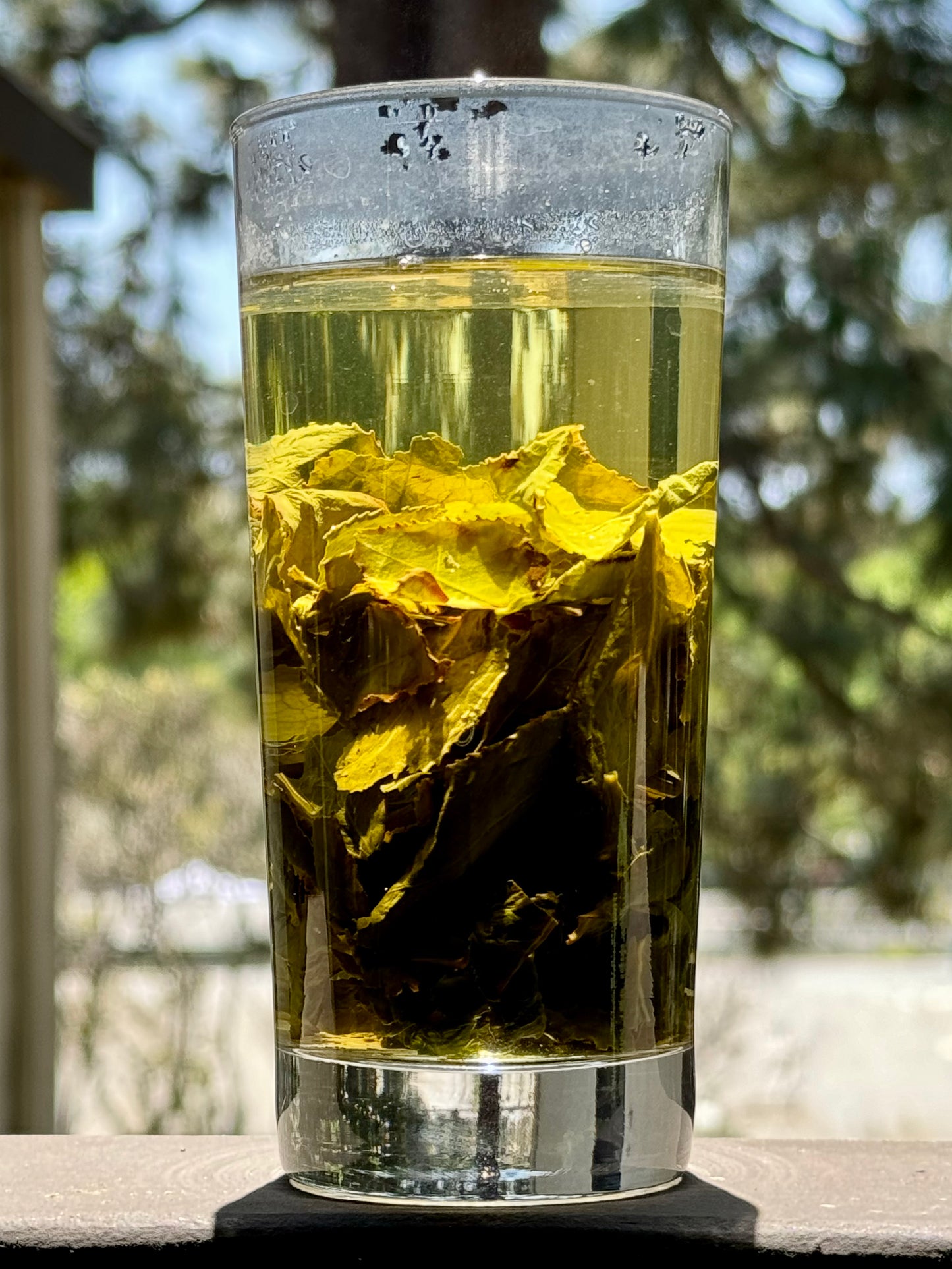Milk Oolong Tea
Milk Oolong Tea
Couldn't load pickup availability
Milk Oolong – Flavored Creamy Oolong Tea (奶香乌龙茶)
Smooth, Sweet Taiwanese Oolong with Added Milk Aroma
Comfort in a cup—floral oolong kissed with creamy fragrance.
Milk Oolong (奶香乌龙茶) is a lightly oxidized Taiwanese oolong tea. The base tea is often crafted from the Jin Xuan (金萱) cultivar, known for its smooth texture and floral body, and then scented with a soft milk aroma during drying.
This style of Milk Oolong is beloved for its accessible flavor, silky mouthfeel, and sweet, comforting aroma. It is ideal for those who enjoy a fragrant, dessert-like tea with a gentle finish.
Why You’ll Love This Milk Oolong
- Creamy, sweet milk aroma added for extra richness
- Smooth and round body—easy to drink and comforting
- Great introduction to oolong tea for beginners
- Perfect for tea lattes, sweet pairings, or cozy evenings
- Balanced between floral brightness and soft creaminess
Tasting Notes
• Aroma of steamed milk, sweet cream, and orchid
• Velvety body with notes of vanilla, gardenia, and milk candy
• Naturally sweet finish with lingering floral scent
• Soft, warming presence and easy drinkability
Tea Profile
• Type: Flavored Taiwanese Oolong
• Cultivar: Jin Xuan (金萱, TTES No. 12)
• Origin: Taiwan (typically Nantou or surrounding regions)
• Elevation: 800–1,200 meters
• Harvest: Spring or winter
• Craftsmanship: Light oxidation (~15–20%), semi-ball rolled, flavored during drying
• Appearance: Tightly rolled green leaves; pale gold infusion
• Collected: 2025
Processing
This Milk Oolong is crafted from the Jin Xuan cultivar and flavored with a natural or food-safe milk essence during the drying stage:
- Plucking – 2–3 leaves and a bud
- Withering & Oxidation – Light handling to retain fragrance
- Fixation & Rolling – Pan-fired and rolled into semi-balls
- Drying & Scenting – Flavored with milk essence for added creaminess
This gives the tea its distinctive dairy aroma and comforting, approachable flavor.
Health Benefits
Flavored Milk Oolong is still made from high-quality tea leaves and offers:
• Soothing, low-caffeine calm
• Naturally uplifting without bitterness
• A comforting alternative to sweetened drinks
• Supports hydration and light digestion
Brewing Instructions
Gongfu Method (5 oz / 150 ml)
- Tea amount: 5–6 grams
- Water temperature: 85–90°C / 185–194°F
- Rinse: Optional 3-second rinse
- Infusions:
- 1st: 30 sec
- 2nd: 40 sec
- 3rd+: Increase slightly
- Tip: Use porcelain or glass to enjoy the creamy aroma
Cup Method (8.8 oz / 250 ml)
- Tea amount: Adjust based on personal preference for tea strength.
- Water temperature: 85°C / 185°F
- Steep time: 2–3 minutes
- Re-steep: 2–3 times
- Note: Can be served hot or over ice—also excellent with milk
Cultural Notes
While traditional Milk Oolong (unscented Jin Xuan) is praised for its natural creaminess, this version—with added milk aroma—is crafted to emphasize the experience of flavor and comfort. It has become especially popular in cafes, milk tea shops, and among drinkers who enjoy sweet, smooth teas that resemble dessert.
Whether you drink it pure, iced, or blended with milk, this tea brings a playful and cozy experience to your cup.
Share









Whoever does the tasting notes for these is bang on. My review would be Trust the Tasting Notes above.. lol. This milk oolong is wonderful. Like someone tried to make an alcohol free kaluah. ❤️
very soothing it is a very interesting tea









